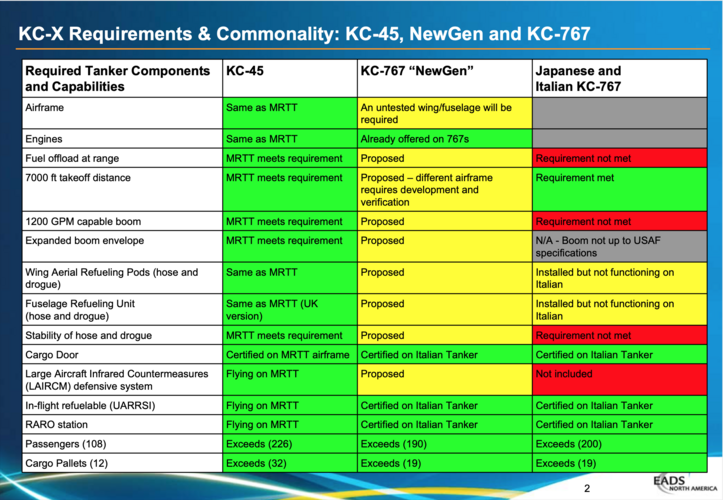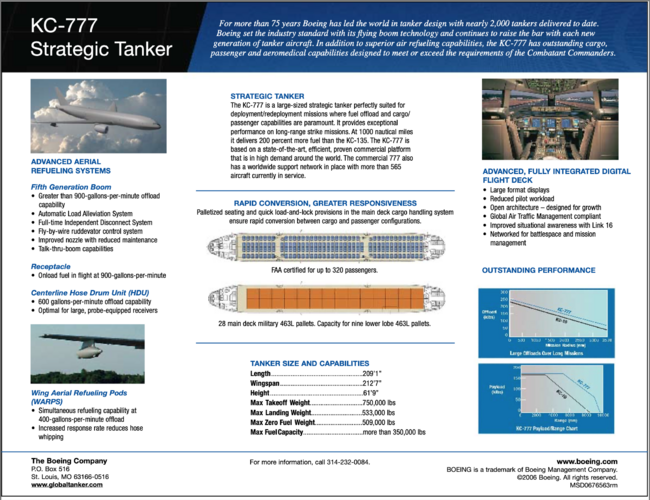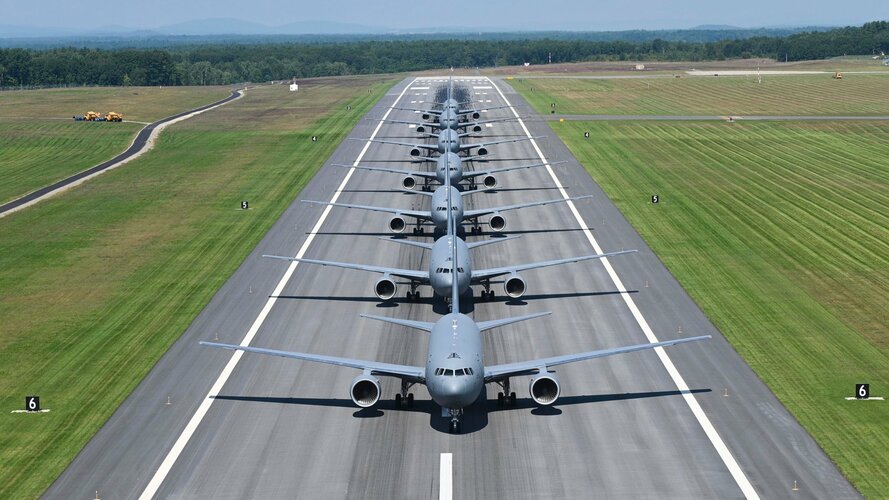The requirements for KC-X Round 2 were totally reasonable,
Well, reasonable in meeting Congress's clear signals that DoD shouldn't allow Airbus to win again, leading them to take out all the plus points that had advantaged the A330 in the original assessment.
Which means that even with the assessment weighted towards them, Boeing weren't convinced KC-46 was good enough to win on its own merits.
The second RFP also deleted requirements where Boeing beat EADS, such as basing requirements where the 767's smaller size gave it an advantage.
That RFP deleted hundreds of requirements and omitted any subjective evaluation of performance, which was one thing that GAO based their decision to overturn the selection of EADS on. Keep in mind that according to GAO, the Boeing bid satisfied "far more" of the RFP's desired features than EADS did.
The second RFP listed 372 mandatory requirements that a bid had to meet to be deemed compliant. These requirements would be evaluated against only the RFP, not each other; capability baseline was the KC-135R. If any two bids were within 1% on cost, an additional 93 requirements would be evaluated on a points system and compared.
Boeing underbid for a couple reasons. They felt they could take the hit in the near term and make it back later, and prevent EADS from winning on the back of any European subsidies, which EADS ultimately did not receive (and it would have been asinine for the company to think they could have gotten away with that anyway).
As for refueling clearances, the aircraft is cleared to refuel the F/A-18E/F/G via the centerline drogue system without any restrictions on operational missions. It is cleared to refuel the C-17, B-52,and other KC-46 on operational missions with certain restrictions.
Other aircraft certified for refueling, but not yet cleared for operational missions, are the C-5, HC/KC-130J, RC/TC-135,F-15, F-16, F-22, F-35A, and B-1B with varying restrictions. Certification for the V-22 is pending, and other aircraft such as the F-35B/C have not begun testing as if yet.
The Wing Aerial Refueling Pods are in operational test and should be delivered "soon," after they receive FAA certification, which turned out to be very problematic to receive and delayed all testing for several years.










